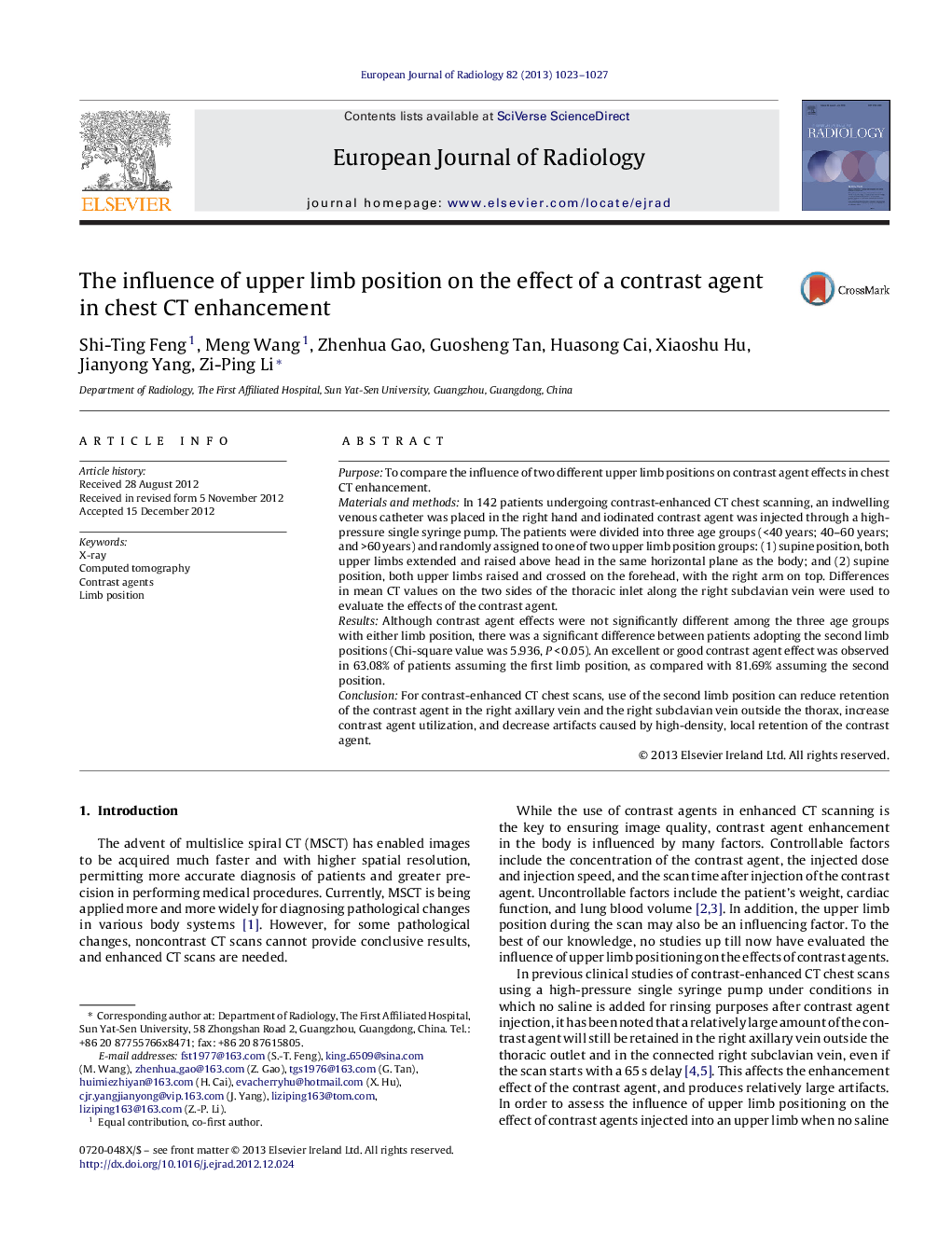| Article ID | Journal | Published Year | Pages | File Type |
|---|---|---|---|---|
| 4225500 | European Journal of Radiology | 2013 | 5 Pages |
PurposeTo compare the influence of two different upper limb positions on contrast agent effects in chest CT enhancement.Materials and methodsIn 142 patients undergoing contrast-enhanced CT chest scanning, an indwelling venous catheter was placed in the right hand and iodinated contrast agent was injected through a high-pressure single syringe pump. The patients were divided into three age groups (<40 years; 40–60 years; and >60 years) and randomly assigned to one of two upper limb position groups: (1) supine position, both upper limbs extended and raised above head in the same horizontal plane as the body; and (2) supine position, both upper limbs raised and crossed on the forehead, with the right arm on top. Differences in mean CT values on the two sides of the thoracic inlet along the right subclavian vein were used to evaluate the effects of the contrast agent.ResultsAlthough contrast agent effects were not significantly different among the three age groups with either limb position, there was a significant difference between patients adopting the second limb positions (Chi-square value was 5.936, P < 0.05). An excellent or good contrast agent effect was observed in 63.08% of patients assuming the first limb position, as compared with 81.69% assuming the second position.ConclusionFor contrast-enhanced CT chest scans, use of the second limb position can reduce retention of the contrast agent in the right axillary vein and the right subclavian vein outside the thorax, increase contrast agent utilization, and decrease artifacts caused by high-density, local retention of the contrast agent.
